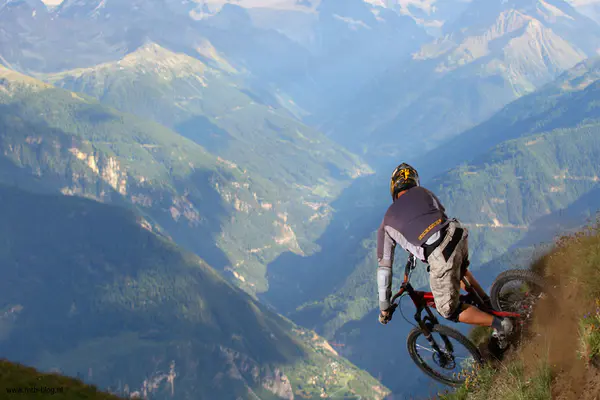Downcountry mountain biking is a blend of cross-country and trail biking. It combines the efficiency of XC bikes with the fun and capability of trail bikes. This new category of mountain biking has been gaining popularity rapidly.
What Defines Downcountry Mountain Biking?
Downcountry mountain biking is defined by its balance. It offers the speed and agility of XC biking with added stability and control for descents. These bikes usually have around 120mm of suspension travel. They are lightweight but robust, making them perfect for a variety of terrains.
The Evolution of Downcountry Bikes
Downcountry bikes evolved from the need for versatile performance. Riders wanted bikes that could climb efficiently and handle descents well. The biking industry responded by creating downcountry-specific models. These bikes feature a mix of lightweight materials and durable components.
The Appeal of Downcountry Mountain Biking
Downcountry mountain biking appeals to a broad audience. XC riders enjoy the added capability on descents. Trail riders appreciate the climbing efficiency. This versatility makes downcountry biking an exciting choice for many.
Characteristics of Downcountry Bikes
Frame Design
Downcountry bikes have a lightweight frame. This design ensures agility and speed. The geometry is balanced, providing stability on descents and efficiency on climbs.
Suspension Travel
These bikes typically feature around 120mm of suspension travel. This is more than traditional XC bikes but less than trail bikes. It offers a perfect balance for varied terrains.
Tire Choices
Tires on downcountry bikes are designed for mixed terrains. They provide grip and control on descents while maintaining low rolling resistance for climbs.
Component Selection
Components on downcountry bikes are chosen for durability and performance. They include strong brakes, efficient drivetrains, and robust wheels.
Riding Techniques and Skills
Climbing Techniques
Climbing on a downcountry bike requires efficiency. Riders should focus on smooth pedaling and maintaining momentum. The bike’s geometry aids in stable and efficient climbing.
Descending Techniques
Descending on a downcountry bike is exhilarating. Riders benefit from the bike’s stability and control. Proper body positioning and braking techniques enhance the experience.
Balance and Control
Balance is crucial in downcountry riding. The bike’s design helps maintain control. Riders should practice balance drills to improve their skills.
Popular Downcountry Destinations
Global Trails
Some of the best downcountry trails are found worldwide. Places like Moab, Utah, and the Alps offer diverse and exciting trails.
Local Favorites
Local trails can also provide great downcountry experiences. Riders should explore nearby parks and trails for hidden gems.
Training for Downcountry Riding
Physical Fitness
Physical fitness is important for downcountry riding. Riders should focus on building endurance, strength, and flexibility.
Essential Exercises
Exercises like squats, lunges, and core workouts are beneficial. They help in improving overall biking performance.
Skill-Building Drills
Drills like cornering practice and balance exercises are crucial. They enhance control and confidence on the bike.
Recovery and Injury Prevention
Recovery is vital for consistent performance. Stretching, hydration, and proper rest are essential. Riders should also practice injury prevention techniques.
Gear and Accessories
Must-Have Gear
Essential gear includes helmets, gloves, and protective clothing. These items ensure safety and comfort.
Safety Equipment
Safety equipment like knee pads and elbow guards is important. They protect against injuries during falls.
Maintenance Tools
Basic maintenance tools include a multi-tool, tire pump, and spare tubes. Regular maintenance keeps the bike in optimal condition.
Apparel and Footwear
Proper apparel and footwear enhance the riding experience. Breathable clothing and sturdy shoes provide comfort and support.
Community and Culture
The Downcountry Biking Community
The downcountry biking community is vibrant and welcoming. Riders share experiences and tips, fostering a sense of camaraderie.
Events and Competitions
Events and competitions are a big part of the culture. They provide opportunities for riders to showcase their skills and connect with others.
Social Media Influence
Social media has a significant impact on downcountry biking. Platforms like Instagram and YouTube are popular for sharing experiences and tutorials.
Stories from Riders
Riders often share inspiring stories. These narratives highlight personal achievements and the joy of downcountry biking.
See Also: How to Gain Confidence Mountain Biking
Environmental Impact
Sustainable Riding Practices
Sustainable practices are important in downcountry biking. Riders should respect trails and minimize their environmental footprint.
Trail Conservation Efforts
Trail conservation is crucial for maintaining riding spots. Volunteers often participate in trail maintenance and cleanup activities.
Eco-Friendly Gear Options
Eco-friendly gear options are becoming more available. Brands are focusing on sustainable materials and production processes.
Impact on Local Ecosystems
Riders should be aware of their impact on local ecosystems. Responsible riding helps in preserving natural habitats.
Future of Downcountry Mountain Biking
Technological Advancements
Technological advancements continue to shape downcountry biking. Innovations in bike design and materials are enhancing performance.
Trends and Predictions
Trends in downcountry biking indicate continued growth. More riders are expected to adopt this versatile style.
Challenges and Opportunities
The future holds both challenges and opportunities. Issues like trail access and environmental concerns need addressing. However, the potential for growth and innovation is vast.
Conclusion
Downcountry mountain biking is an exciting and versatile discipline. It offers a unique blend of climbing efficiency and descending fun. The community is growing, and technological advancements are driving the sport forward. With sustainable practices and continued innovation, downcountry mountain biking has a bright future.

